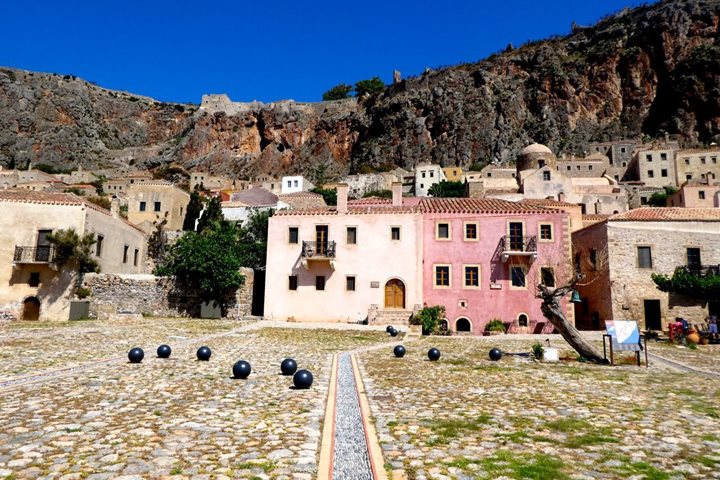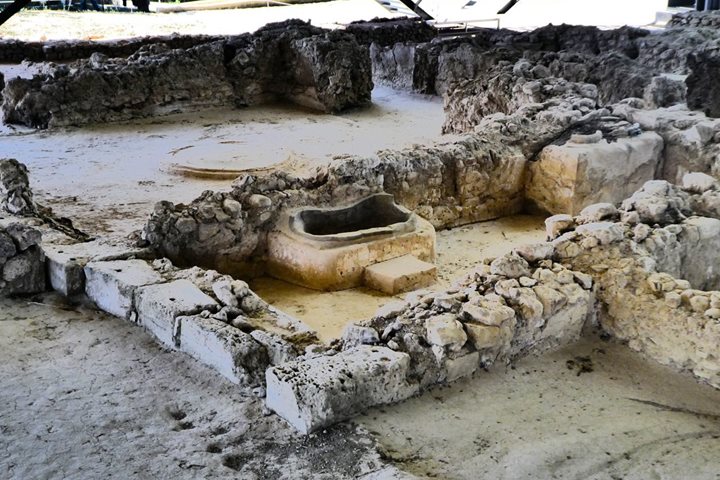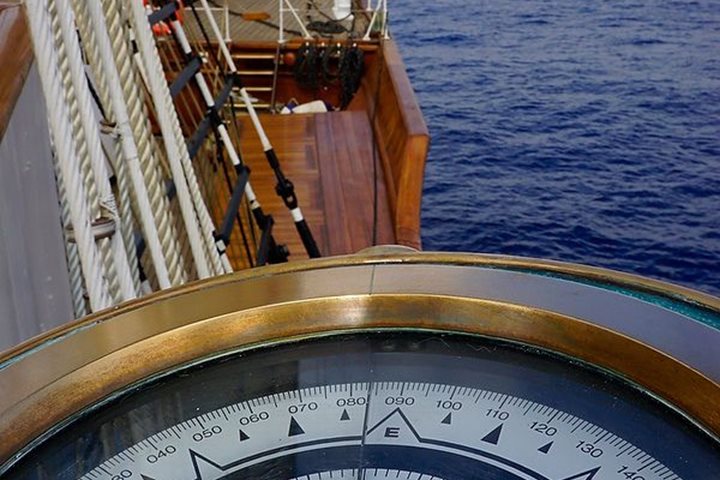The sun broke through the clouds as Sea Cloud approached the southwest coast of the Peloponnesus peninsula just after dawn. After two days of gray skies and calm “wine dark seas,” the freshening breeze held promise of a wonderful morning under sail as we tracked south down the coast towards for our afternoon visit to the medievalcastle of Methoni and the delightful fishing village of Pylos. Many gathered on the lido deck mid-morning for Massimo’s talk on his Life as a Documentary Photographer to learn about his approach to exploring the culture and philosophy of different cultures and what he has learned from recording the elders of a community; voyeurism on the beaches of Italy; the effects that war and starvation on the people of the Congo; and Shinto fertility festivals.
After lunch the majority of us headed off for a 20-minute ride to visit the crusader castle of Methoni. Built by the Franks following the Fourth Crusade and then expanded in the following centuries by both its Venetian and Ottoman overlords, the fortress was really more of a small walled city, complete with two Turkish hamams and a Byzantine chapel. A stunning 14- arched stone bridge now stands in place of the original drawbridge, which crossed the wide moat surrounding the castle. Two high crenelated towers flanked the entrance that led to a doomed road between the inner and outer walls. Along this cobbled passage there were two more fortified gates that finally led up to the inner keep, now a large meadow punctuated with old cisterns and the ruined foundations of the houses of the Venetian lords. A flagstone path led down the length of the field towards the small arched sea gate leading the Bourtzi, an early 16th century two-story domed towers that served at various times as a prison for the condemned. Massive bas-relief panels depicting the “Lion of St Mark” – the symbol of Venice, appeared in various spots on both the inner and outer walls of the fortress. Several of our party noticed the large, round stone balls that were imbedded in the outer walls of the castle—projectiles from long past battles and sieges. The guides pointed numerous types of late spring wildflowers and herbs that grew in abundance all over the fields of the inner keep as we made our way around the silent battlements. The castle was manned by the French following the Greek War of Independence and more recently served as a prison for British POWs during WWII.
After a quick trip back to the ship to grab our swimsuits, many of us took our bus through the countryside north of the city to the small omega-shaped Voidokoilia Beach. Once ranked by The New York Times as one of the top-ten beaches in the Mediterranean for good reason—it has powder-soft white sand and warm waters. Despite the brisk breeze most people had a swim, enjoyed a cold glass of “something,” while a few more intrepid members of our company hiked to the top of the hill on the northern headland to visit a Mycenaean tomb, reputed to belong to the son of King Nestor of the Iliad fame.







